The 7 best holiday destinations to explore Oman
Thinking of a holiday to this strikingly beautiful Gulf country? Here’s how to make the most of your trip
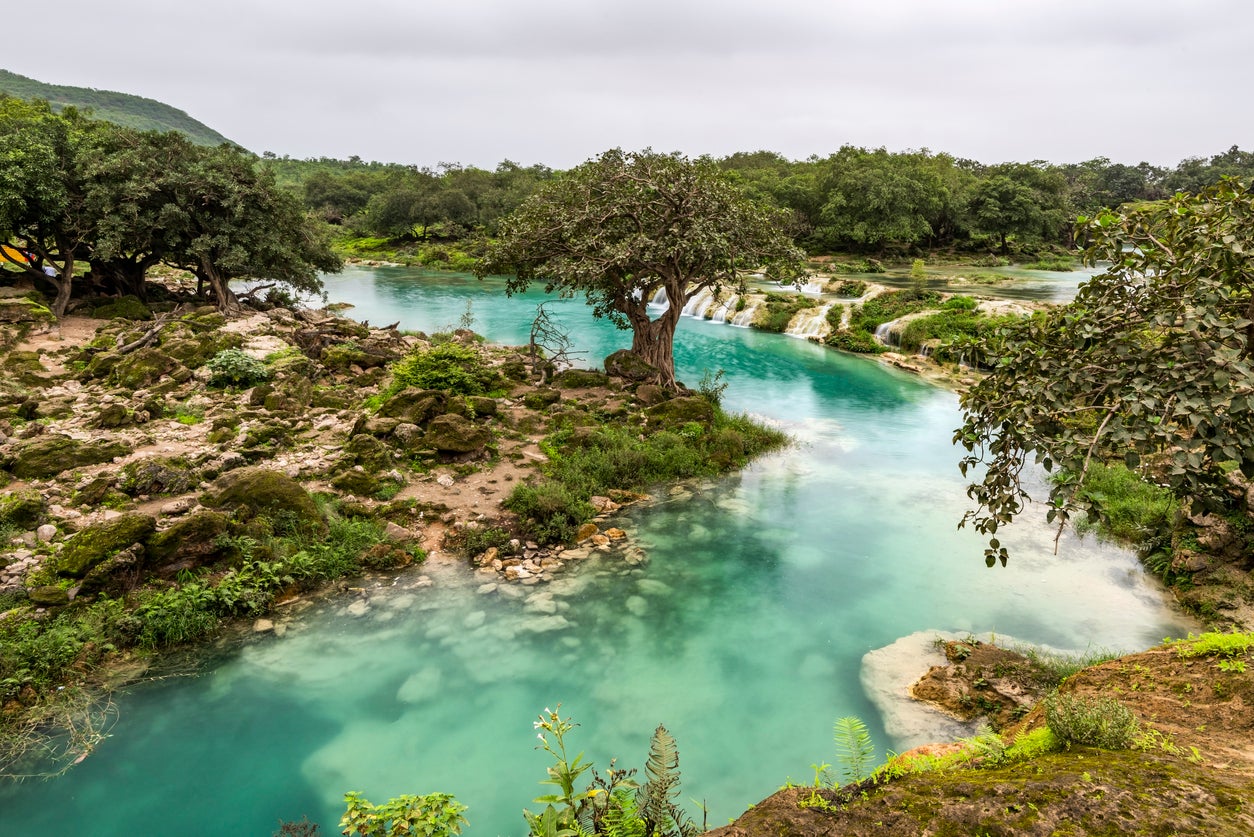
If you’re looking to explore a country of vast deserts, vibrant cities and attractive coastline, Oman may just be what you’re after. The nation lies on the southeast of the Arabian Peninsula, and is one of the most beautiful destinations in the Gulf.
Oman is a country steeped in history but also one embracing modernity. The capital, Muscat, is a thriving coastal city that showcases the success of the country’s strong modernisation process. Conversely, the town of Nizwa still bears witness to times gone by, giving visitors an excellent insight into Omani culture. The towering Hajar Mountains dominate the landscape around these cities, while a expanse of desert lies in between, and along the coast there are white sand beaches to be found.
With such a destination of such depth, it can be hard to know how to plan a holiday. We’ve made it easier for you, finding the best places to add to your Oman itinerary.
Muscat
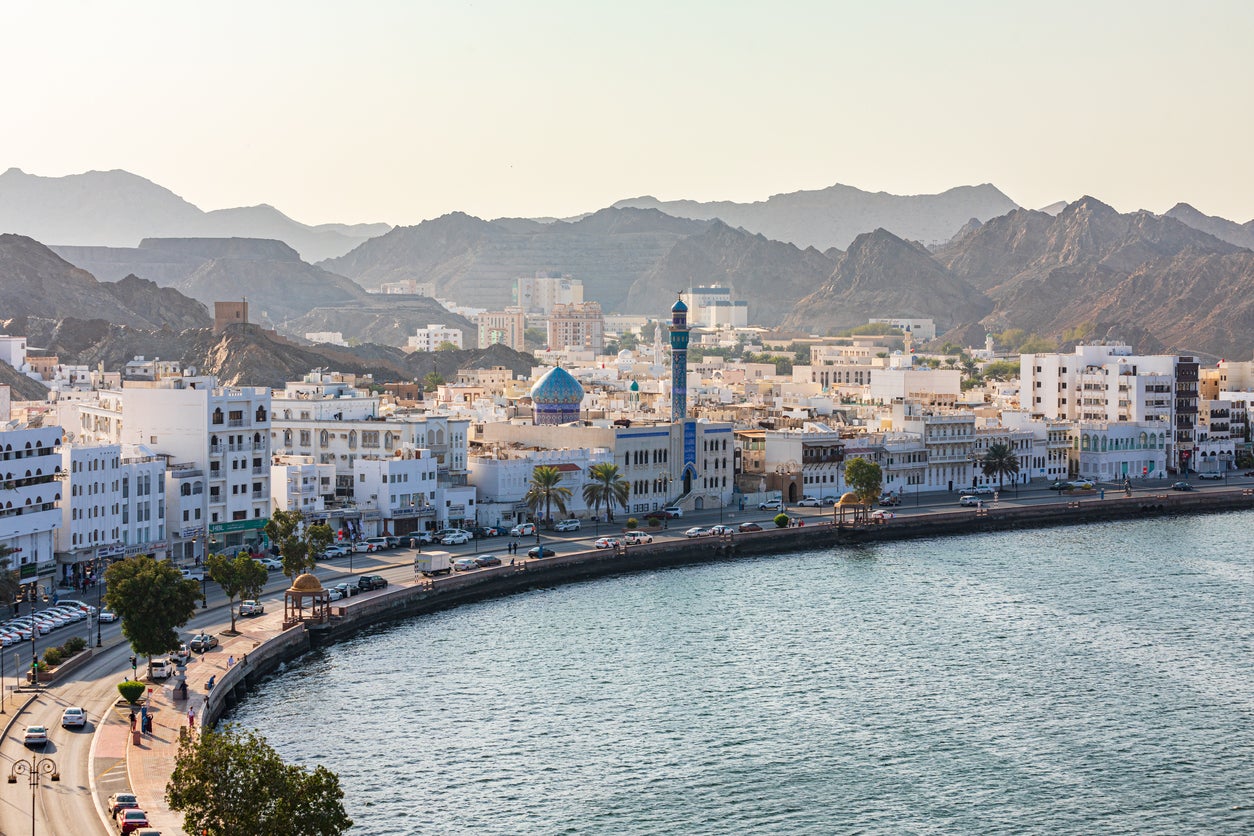
Oman’s ancient capital is located in the north of the country. It sits on the Gulf of Oman and is backed by the imposing Hajar Mountains, giving the city surroundings that are equally as picturesque as its white-washed buildings and striking architecture.
The most impressive of this architecture is the Grand Mosque. Completed in 2001, it showcases modern Islamic design and has space for over 20,000 worshippers. The sultan’s own palace is a modest building, with a retro style, from the mushroom pillars to the Disneyesque colonnade. Across from it, the National Museum is the choice for those looking to delve into the country’s history, with exhibits exploring Omani heritage as far back as pre-historic times.
A wander around the city will take you past a mix of modern shops and restaurants, elegant hotels, colourful mosques and traditional buildings. This is especially true in Muttrah, where the mazy streets of the Muttrah Souk lie near the waterside corniche promenade.
Read more on North Africa and the Middle East travel:
Nizwa
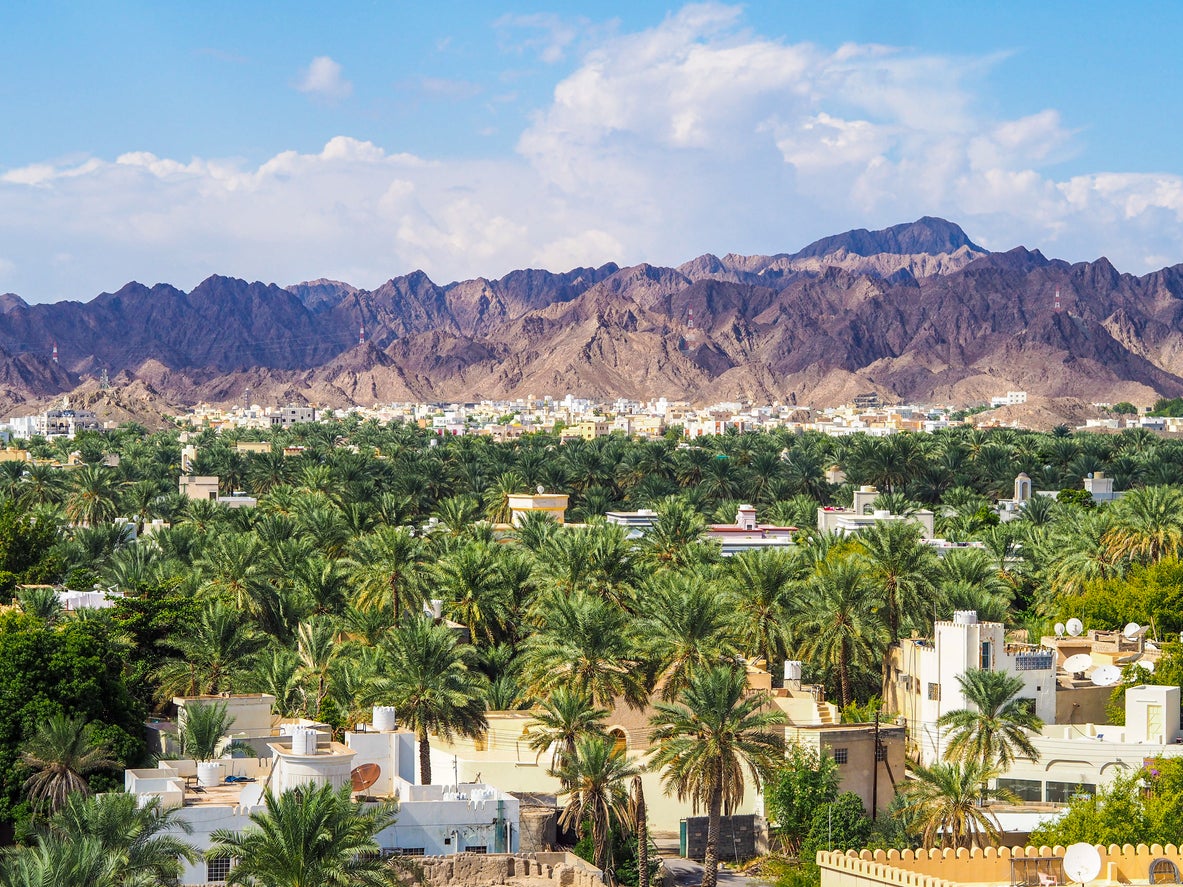
Once a religiously conservative and isolationist city, Nizwa has developed into one of the main tourist destinations in the country. Its religious history is still visible through the many mosque domes and minarets, while honey-hued sarooj buildings (made from clay-like soil) populate much of the rest of the skyline, with the towering Hajar Mountains almost always in the background.
The Nizwa Fort, a 17th-century building featuring a 40-metre circular tower, is the city’s standout site. The souk, one of the oldest in Oman, is less touristy than those of major Arabian destinations – and is mainly dedicated to fresh produce – though there is a small section selling crafts and souvenirs.
Sur
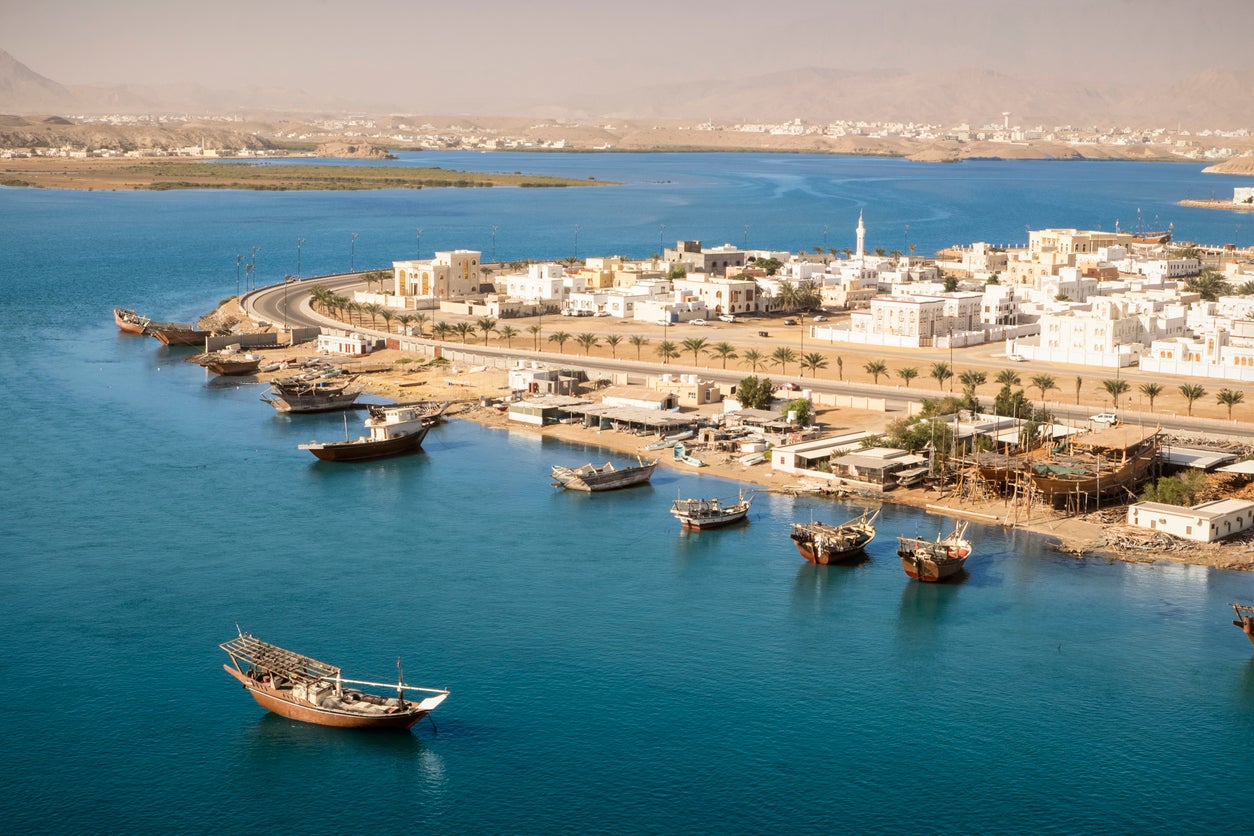
A coastal town two hours away from Muscat, Sur is a similarly charming, if less grand, city of white-washed buildings and golden desert hills. Far removed from the capital’s busier streets, Sur is a laid-back place that was once well-known for its ship-building, famous for the hand-crafted dhow boats that were made in its harbour (and still are at the Dhow Factory). The city’s relationship with the sea can be explored further at the Maritime History, an open-air attraction that houses the Fatah Al Khair, a restored traditional vessel.
The city’s main landmarks include the 300-year-old Sunaysilah Castle, built at a time when the city was a major centre of trade, and the Al-Ayjah Lighthouse, constructed by the Portuguese and now offering a platform that gives sweeping views of Sur. The city also has its own corniche promenade, a good place for a gentle stroll while taking in views of the sea.
Tiwi Beach and Fins Beach offer white sands, pebbles and clear waters less than an hour north up the coast, while the Bimmah Sinkhole is a wild haven surrounded by golden limestone hills and caves. Wadi Shab is one of a series of well-known wadis – these are magnificent oasis river valleys that offer hikes and tranquil swimming spots – throughout the country, and it lies 10 minutes south of Tiwi.
Dhofar and Salalah
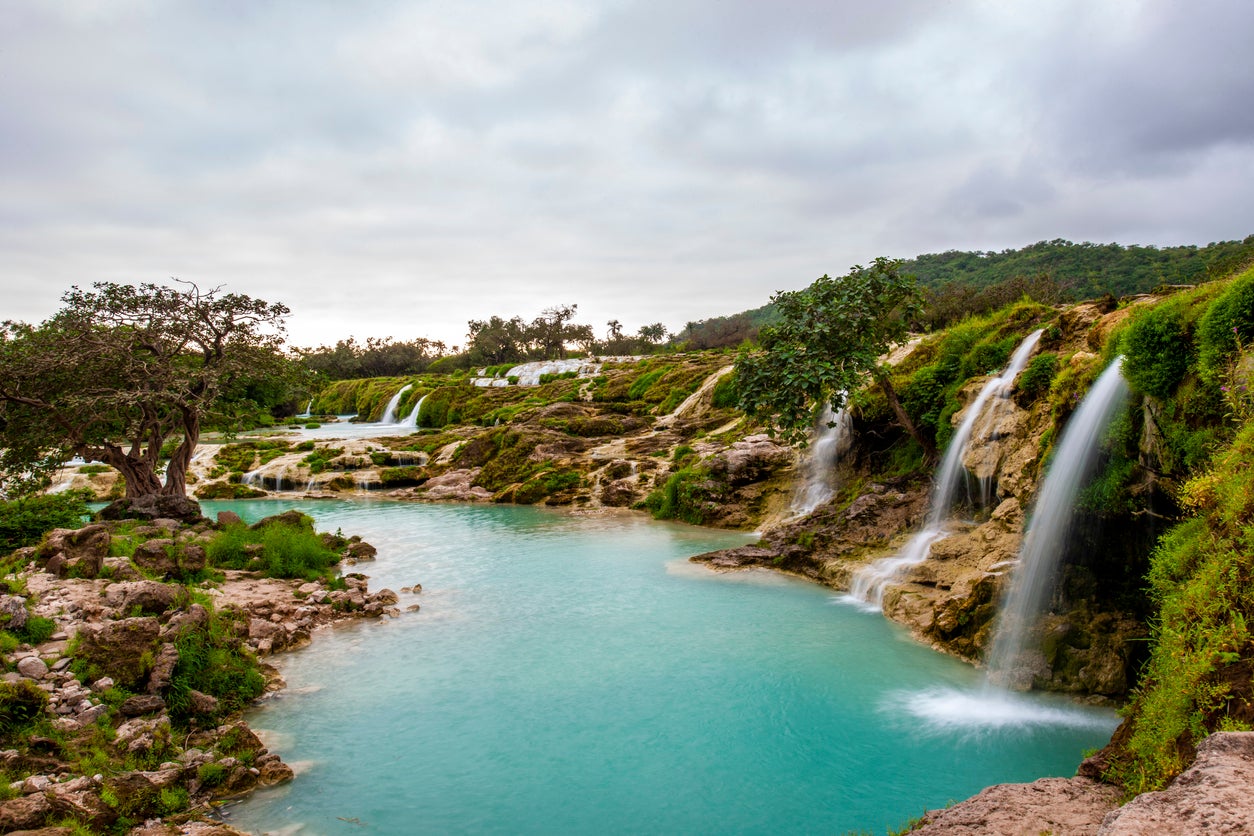
The Dhofar region sits on the southern coast in a diverse area of the country. The annual Khareef monsoon changes the arid desert terrain into a verdant landscape of green-topped cliffs and seasonal waterfalls. The area was historically known for its frankincense production, and today the main production area – Wadi Dawkah – and the ruins of local medieval towns at Khor Rori and Ubar are Unesco-listed as the “Land of Frankincense”.
The region is home to some of the best beaches in Oman, from the white sands of Al Fazayah to the mountainous surroundings of Mughsail Beach (and its famous geysers). Alongside Dawkah, Wadi Darbat is where waterfalls feed into lakes and swathes of dense greenery meet mountain terrain.
The capital of the region, Salalah, is the third-largest city in Oman. Visitors can explore the centuries-old Al Hosn souk, a maze of alleyways that adjoins the Sultan’s Palace, which itself dominates the southern end of the city and lies along its beach, Al Haffa. The birthplace of the late Sultan Qaboos, it is also home to a mosque that bears his name.
Khasab and the Musandam Peninsula
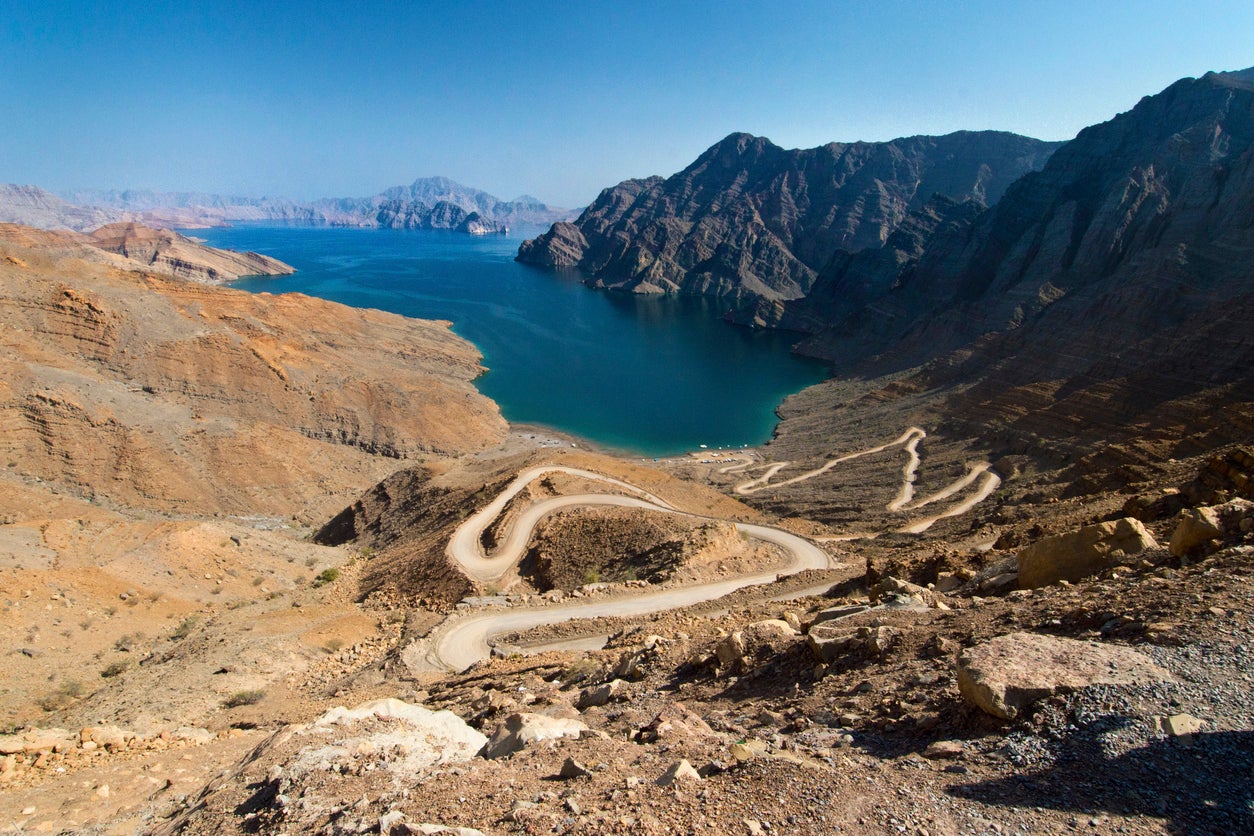
Spearated from the rest of Oman by part of the UAE, the Musandam Peninsula is the northwestern tip of the Arabian Peninsula, lying between the Arabian Gulf and the Gulf of Oman. The western part of the Hajar Mountains rise steadily from the waters of the Gulf, and the movement of tectonic plates has created a network of khors, fjord-like landscapes that have led to the area being nicknamed the “Norway of Arabia”. Two of the most well-known are Khor Najd and Khor Al Sham, where arid yellow cliffs and mountains surround blue lagoons.
Khasab is the largest settlement in the area and makes a good base for exploring. A small but lively town, it has its own Portuguese-built fort (which houses exhibits on Musandam culture, history and geology), plus a bustling souk and harbour area. Visitors can arrange boat tours and snorkelling trips, and there are also various wild swimming opportunities. Others may wish to set off to explore the Hajar Mountains, including Jebel Harim, the highest peak on the peninsula.
Bahla
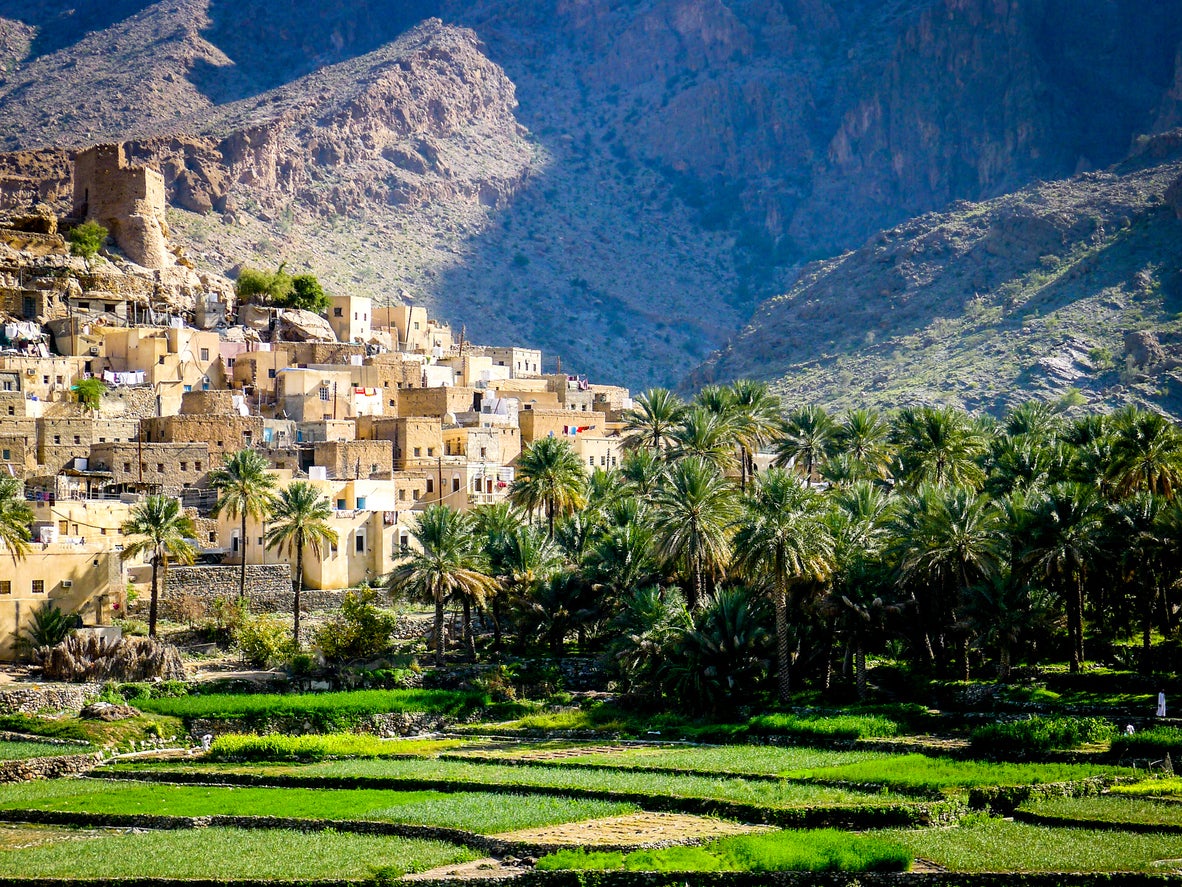
Bahla is a fortified town that lies just west of Nizwa, with a seven-mile perimeter wall surrounding it. According to Unesco, Bahla is “an outstanding example of a fortified oasis settlement” centred around its famous fortress, Bahla Fort. Constructed in the 13th century by the ancient Banu Nebhan tribe, it is a mud-brick structure with stone foundations, intricate battlements and round towers – and now a Unesco-listed site.
The remaining buildings in this oasis – many of which were built with similar unbaked mud brick – are along a network of streets lined with palm trees, historically linked to the importance of the town’s complex falaj irrigation system. Among low-rise arched buildings, covered alleys and the Bahla Mosque, you’ll find the town’s small Old Souq. Smaller and more functional than other markets in the country, there’s a focus on food, spices and household items. Close to Bahla lies the Jabreen Castle, another of Oman’s well-preserved fortifications, this one dating back to 1675.
Sharqiya Sands
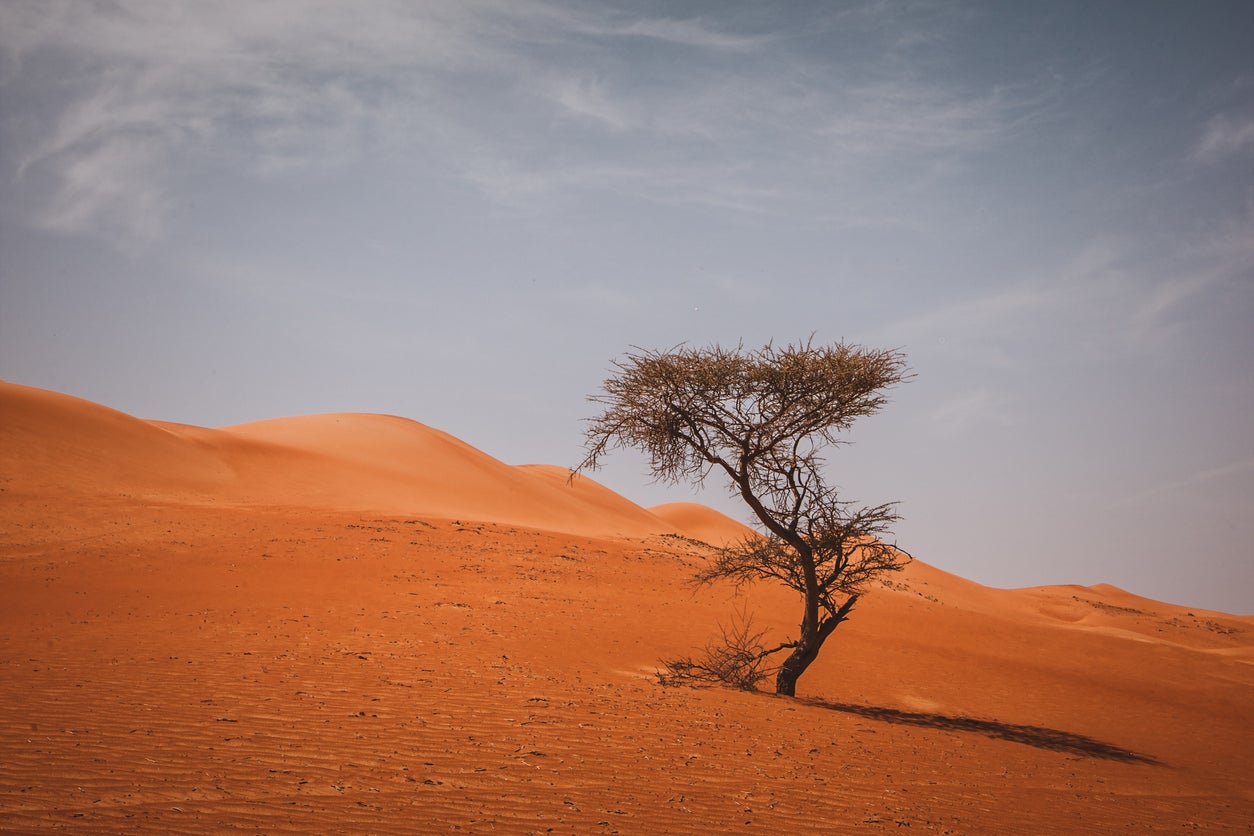
The Sharqiya Sands is a land of rising dunes and sparse desert vegetation, only disturbed by ripples of wind and the movement of Bedouin tribes. The dunes are famed for the varied colours, from gold to shades of deep orange, and their height, with some rising up to 100 metres tall. The region is also home to several oases and a surprising range of flora and fauna, and it’s a popular place to camp. The area is located between Muscat and Sur, and can make an ideal overnight stop if travelling between the two cities.
Activites in the dunes include buggy rides, 4x4 safaris and camel rides. You can visit Bedouin sites, which provide an insight into the traditions of these nomadic groups while offering a range of accommodation (including sand houses and private tents).
Read our reviews of the best winter sun hotels
Join our commenting forum
Join thought-provoking conversations, follow other Independent readers and see their replies
Comments
Bookmark popover
Removed from bookmarks